How did the supply side respond in the energy market after the Trip of two Eraring units on Wednesday 3 April 2024?
We inspect the bidding and dispatch outcomes of key units by fuel type to capture the main energy-focused contributions.
The non-credible event (the trip of Eraring Unit 1 and 2) occurred within the 13:25 dispatch interval. For a deeper dive on the event itself, the four intervals straddling this time period were reviewed on the day in Replaying four dispatch intervals on Wed 3rd April 2024 with the ER01 and ER02 trip (Part 2).
To recap, the following screenshot from ez2view shows:
- A drop of about 1000 MW in the 13:25 dispatch interval, as Unit 1 and Unit 2 tripped.
- The station’s bids had not changed for the 13:30 interval.
- The 13:30 interval’s energy price was only a little over 140 $/MWh. There was one later spike to 268 $/MWh in the 14:40 interval.
- Reduced availability (the step change in the chart) of Eraring’s Unit 1 and Unit 2, via rebids to account for the outage, was first reflected in dispatch in the 13:35 dispatch interval.
- Eraring’s collective output did increase after the trip – Unit 3 remained operational and increased supply.
To view how other NSW units responded, I’ve taken a “by fuel-type” approach, and identified the following.
Gas units
At 13:28, two minutes after Eraring’s rebids were submitted (which was at 13:26), Uranquinty rebid units URANQ11 and URANQ12. The effect was to move a collective 305 MW priced at market cap to down to the market floor price (-1000 $/MWh).
It was URANQ11 that began its ramp up from the 13:40 interval, eventually to its maximum availability level. This was noted by Paul in Replaying four dispatch intervals on Wed 3rd April 2024 with the ER01 and ER02 trip (Part 2).
Although rebid at the same time, URANQ12 received its first non-zero target for the 13:45 dispatch interval, believed to be in line with its fast start profile which required 11 minutes to synchronise.
A later increase in station output, from interval 14:35, included output from URANQ13 and URANQ14 while URANQ11 and URANQ12 received reduced dispatch targets (seen in the above chart). The collective effect was an increase in station output until 14:50.
Coal units
At 13:28 (effective for 13:35) Vales Point units 5 & 6 were rebid to double their upwards rates of change (from 3 MW/min to 6 MW/min, as bid).
This appears to have helped the units achieve higher dispatch targets sooner. 729 MW priced between 0 – and 88 $/MWh was progressively dispatched to 14:50 and the increase was generally in line with ramp rates.
A minute after the Vales point rebids, ER03 (the one that did not trip) was rebid (effective 13:35) to set all availability at -1000 $/MWh.
This led it to receive targets in line with its upwards ramp rate of 5 MW/min (bid), eventually increasing output +350 MW by 15:00.
Hydro units
Prices appeared to remain too low for much of the hydro fleet to contribute energy in the absence of the two Eraring units. The following chart shows that much of the energy capacity was offered higher that $150 per MWh.
The highest aggregate level of output was seen at 13:30 when 175 MW from hydro resources was dispatched. A small amount relative to available capacity.
Soon afterwards, for the 13:40 interval UPPTUMUT rebid with explanation “manage small uneconomical marginal targets” to effectively ensure at least 40 MW was dispatched for a brief period (20 minutes).
A small increase in output at HUMENSW was also noted yet this appears attributable to increased availability following updated water authority releases, rather than in direct response to price conditions caused by the trip event.
Battery storage units
There was little energy contribution from battery storage. As with the hydro sector, prices appear to have remained too low for large volumes to be dispatched in the energy market.
The Queanbeyean battery (QBYNBG1) was the primary contributor to energy output. Darlington Point (DPNTBG1) and Riverina 2 BESS (RIVNBG2) often saw output in the absence of energy targets suggesting these units were likely utilised in FCAS.
At the time of writing
We’re pleased to observe that Eraring Unit 1 and Unit 2 both appear to be operating as per usual since early morning on the 4th April 2024 (to present, 08:30 on the 5th), following the successful and (apparently) event-free the return to regular service that began Wednesday evening (3 April, 2024).


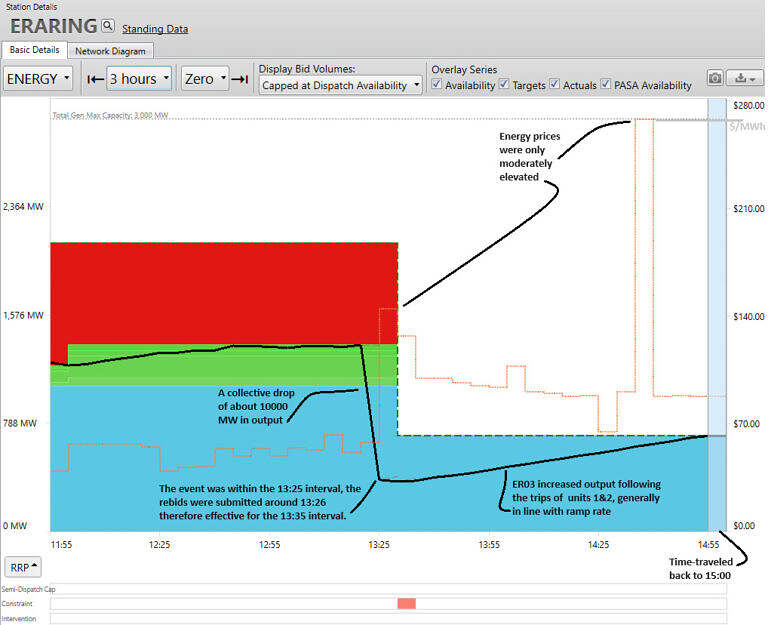
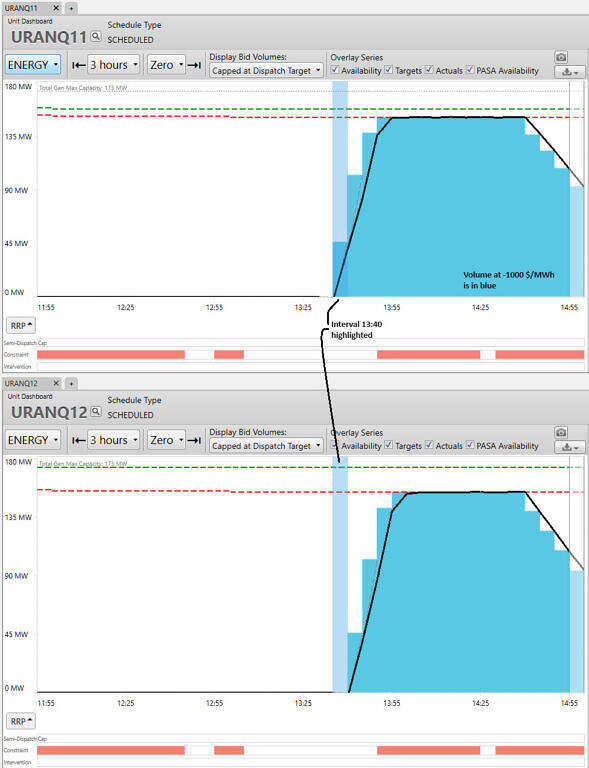
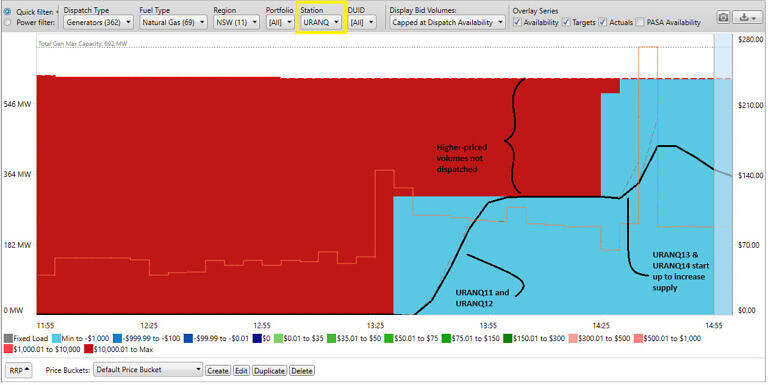
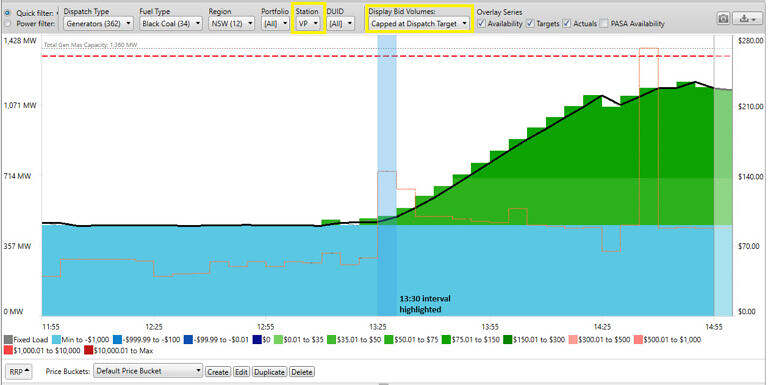
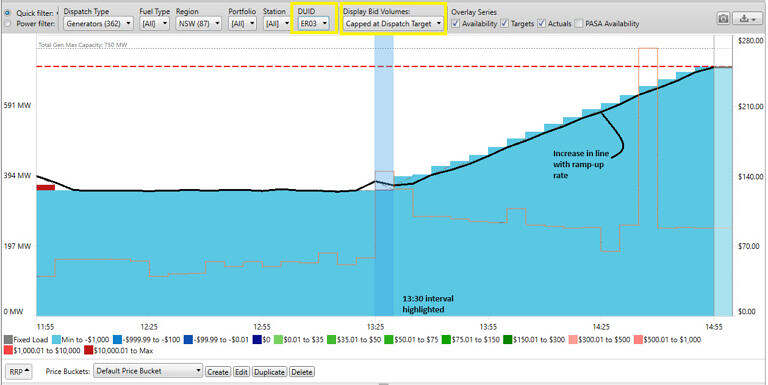
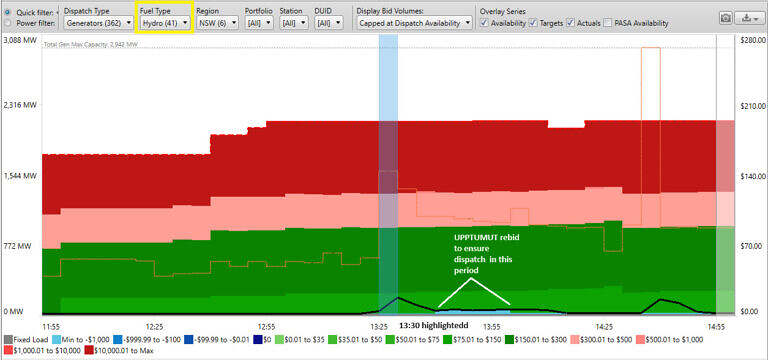
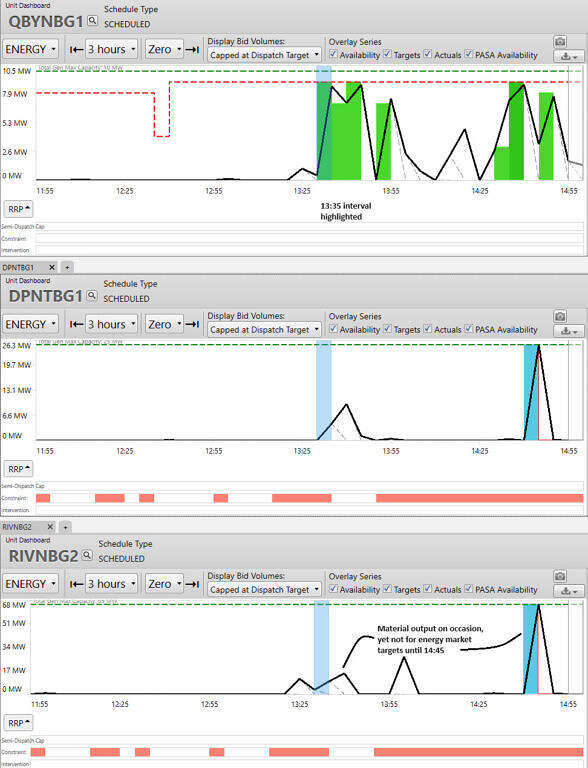
Be the first to comment on "Supply-side responses following the trip of two Eraring units on Wednesday 3 April 2024"